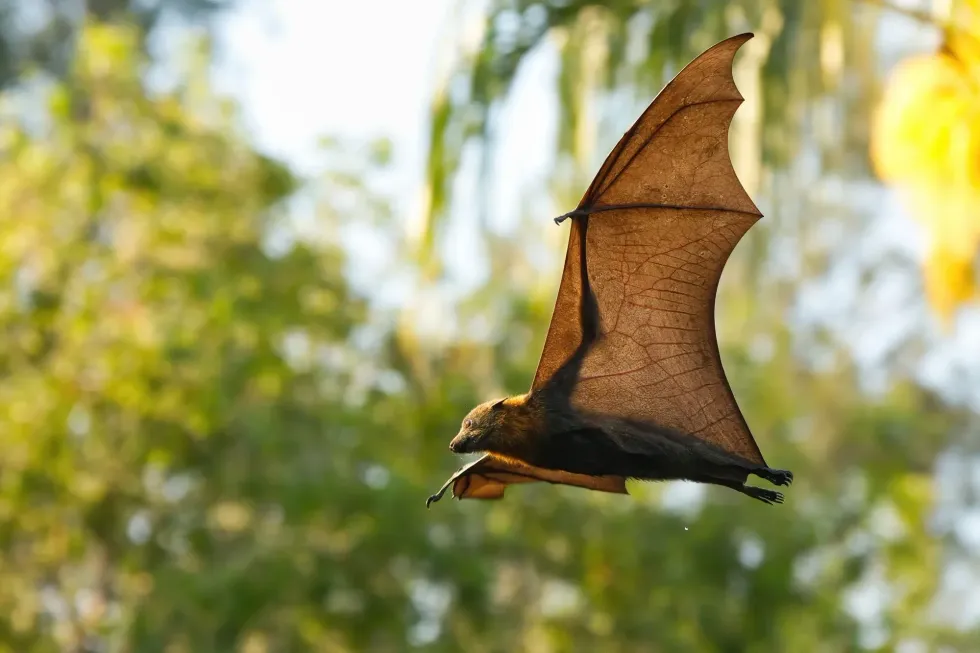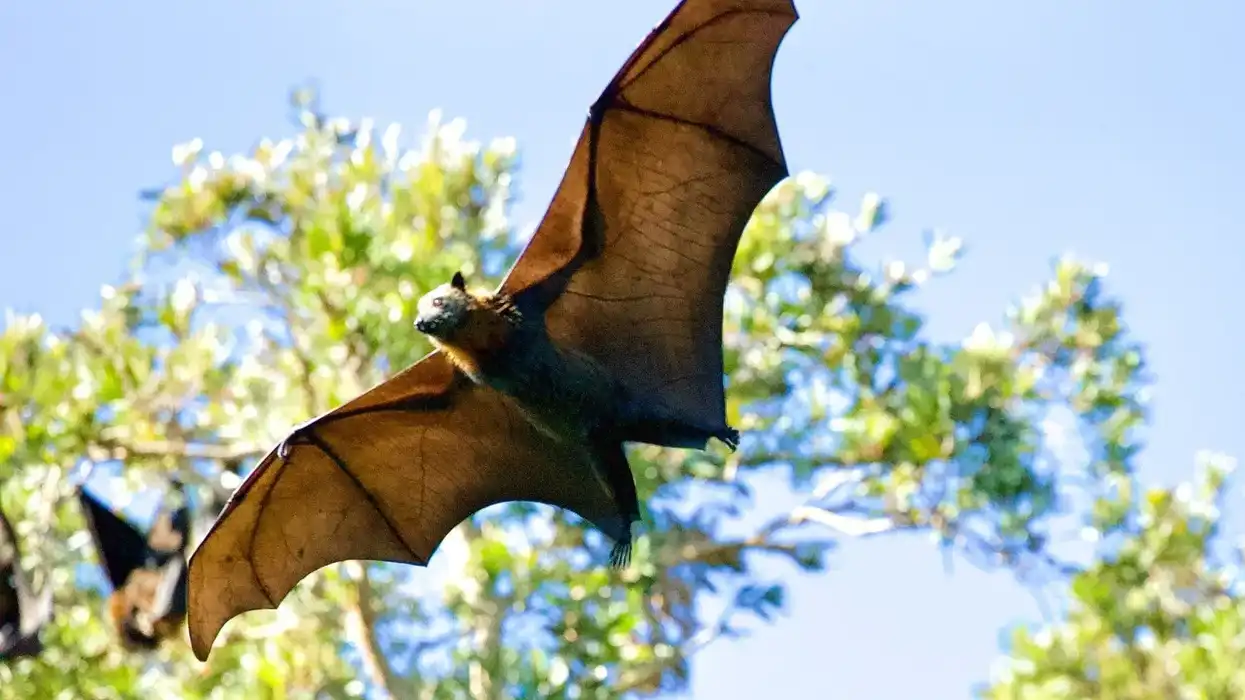Are you excited to learn more about the world of fruit bats? If yes, then come along with us on this journey to learn more about an exciting bat species that reside near northeastern Australia.
Today, we will learn about the common blossom bat (Syconycteris australis), also called the southern blossom bat.
This is one of the smallest nectarivorous species of megabats that lives on a diet of pollen and nectar. This is one of the most known blossom bat species, along with the northern blossom bat, the Fijian blossom bat, and the eastern blossom bat.
When it comes to the bat's physical description, it can be defined as a really cute bat with a fox-like muzzle and big ears.
Fortunately, this doesn't fall under the threatened species, so we can hope to see its rising population for a long time. However, it does have common predators like snakes, birds, cats, and foxes.
Want to know more blossom bat facts? Keep reading to collect knowledge about the exciting world of animals. Also, check out the articles on long-tailed bat facts and fruit bat facts to get more insight into the world of bats!
Blossom Bat Interesting Facts
What type of animal is a blossom bat?
The common blossom bat is a megabat species that feeds on nectar and pollen.
What class of animal does a blossom bat belong to?
The common blossom bat (Syconycteris australis) belongs to the class Mammalia, to the order Chiroptera, and to the genus Syconycteris.
How many blossom bats are there in the world?
Even though this species has a limited habitat range, it is still widely found in that area. Hence, considerable scientific studies are yet to be done to know the proper population distribution.
Where does a blossom bat live?
The common blossom bat is mainly found in different Indonesian islands like Salawati, Biak, and Yapen. Other than that, a vast population also resides in New Guinea and the Bismarck Archipelago. However, it is mainly noted to inhabit different parts of Australia like eastern Queensland and New South Wales.
What is a blossom bat's habitat?
The common blossom bats (Syconycteris australis) love to inhabit different types of forests and roost on trees. Its home ranges include littoral forests of New South Wales, upland tropical rainforests, subtropical rainforest, and wet sclerophyll forest.
During the spring and autumn months, the bats tend to roost inside the forest while changing it to the edges during the winter months.
Who do blossom bats live with?
These are solitary animals that change roosts daily. Hence, you will only see the species getting together during the mating season. After the babies are born, the female bats take care of the young.
How long does a blossom bat live?
The typical lifespan of the blossom bats (Syconycteris australis) is around two to six years. Even though a lot isn't known about their lifespan, these bats tend to survive longer in the wild.
How do they reproduce?
Bat has one of the most interesting reproduction cycles. The southern blossom bats form small groups for two to four weeks twice a year.
The breeding season is usually during March, and the cycle is repeated again in October. As these are solitary animals, the breeding time gives you an opportunity to look at the groups of these fruit bats.
The male southern blossom bats play a vital role in selecting areas with abundant resources. Other key aspects of choosing a partner include the spread of scent. Also, the female has a good look at the male before committing to the pairing. Female fruit bats produce one offspring per mating cycle, so two young are born every year.
Males have no role to play once the mating is over, and the females have to take care of the upcoming baby. It has an average gestation period of around three to four months.
After the baby fruit bats are born, it takes six to eight weeks for total weaning. The mother will carry the babies on the ventral side of its body until the young become independent.
What is their conservation status?
Currently, the common blossom bat (Syconycteris australis) is classified as of Least Concern on the International Union for Conservation of Nature (IUCN) Red List.
Blossom Bat Fun Facts
What do blossom bats look like?

*Please note that this picture is an image of the grey-headed flying fox, and not of the blossom bat. If you have an image of a blossom bat, please let us know at hello@kidadl.com.
The first description of the Queensland blossom bat is that it is the smallest known species of the Pteropodidae family, and it can easily fit into your palm. You may even find them quite similar to hummingbirds because of their tiny size and diet of pollen and nectar.
The backside of this tiny bat is covered in reddish-brown or light brown fur. It has large eyes and ears, but it does lack a tail.
Moreover, the blossom bats have a fox-like muzzle that houses its long tongue, which helps to feed on various flowers to provide adequate energy.
Also, even though these bats are small, they tend to have a higher metabolic rate which leads to quick energy depletion. So, you may frequently find the bats feeding on nectar or pollen to get their energy back.
How cute are they?
The southern blossom bat (Syconycteris australis), or Queensland blossom bat, is extremely cute, especially because of the reddish tinge on the fur. As it's a tiny bat, you can never get enough of its cuteness.
How do they communicate?
One of the most exciting things about any bat is the various ways of communication. Being a part of the Pteropodidae family, the common blossom bat has great smelling capabilities.
This helps it to find flowers for feeding and lets it stay away from predators. These fruit bats also emit something known as a bat odor that helps in communicating with each other.
The southern blossom bat is one such bat species that don't use echolocation to move around. However, its eyesight is better than other bats, and it surely helps to navigate the surroundings at night and find suitable trees.
How big is a blossom bat?
The blossom bat has an average body length of 1.5-2.3 in (38-58.4 mm). Even though it is a megabat species, this is one of the smallest bats that you may see.
Compared to it, the ghost bat reaches a body length of around 3.9-5.1 in (99-129.5 mm). These bats are certainly smaller compared to the biggest bats in Australia, and the black flying fox reaches a length of 7.5 in (19 cm).
How fast can a blossom bat fly?
We are yet to know the exact flying speed of the common blossom bats. However, studies have shown that bats, in general, can have a flying speed of around 100 mph.
How much does a blossom bat weigh?
The average weight range of the common blossom bats is around 0.6–0.7 oz (17–19.8 g) making it one of the lightest fruit bats.
What are the male and female names of the species?
There are no specific names for the male and the female of this species.
What would you call a baby blossom bat?
A fluffy and cute baby bat is called a pup.
What do they eat?
Even though this bat falls under the category of fruit bats, it seldom feeds on fruit as a diet. Instead, most of its diet consists of nectar and pollen collected from nearby areas.
This bat has a special bristled tongue that helps to reach the inner parts of the flower to collect the nectar. It also likes to feed on evergreen flowers as a constant food source. Other than that, the bats also have a taste for bananas that are easily found in tropical areas.
Are they dangerous?
No, just like other megabats or fruit bats, the common blossom bat isn't dangerous to human beings. However, it's best to stay away from it as the species isn't fond of human presence.
Would they make a good pet?
The southern or common blossom bat is not be kept as a pet. These bats dwell in specific rainforests feeding on nectar and pollen that cannot be found anywhere else.
Hence, it is really hard to take care of this species when kept as a pet. Moreover, it is also illegal to possess this animal, and if found, it may have lead to dire consequences.
Did you know...
During the winter months, common blossom bats go through something known as torpor which is similar to hibernation. It helps the bats to save energy for the freezing months when flowers are scarce and they cannot visit a lot of them, and ambient temperature is low. Even pregnant bats can enter torpor to provide extra nourishment to the babies.
Just like the common blossom bats, there is a species known as the Fiji blossom bats that are endemic to Fiji. On the island, the bats are found in caves and reside in large colonies.
Tourism and hunting have pushed this species towards an endangered life. Besides, Fiji also has other types of bats, including the popular Fijian monkey-faced bat.
The common blossom bats carry six times the amount of pollen as compared to birds, and on its visit to the flowers, the magic of fertilization takes place.
How many babies do blossom bats have?
The common blossom bats usually have a single offspring in each season. As there is two breeding season in each year, most females will have a range of two babies.
Is the blossom bat endemic?
Currently, the common blossom bat is endemic to the island of New Guinea, some islands of Indonesia, and to the northeastern parts of Australia.
Here at Kidadl, we have carefully created lots of interesting family-friendly animal facts for everyone to discover! For more relatable content, check out these hoary bat facts and Mexican free-tailed bat facts for kids.
You can even occupy yourself at home by coloring in one of our free printable red bat coloring pages.










